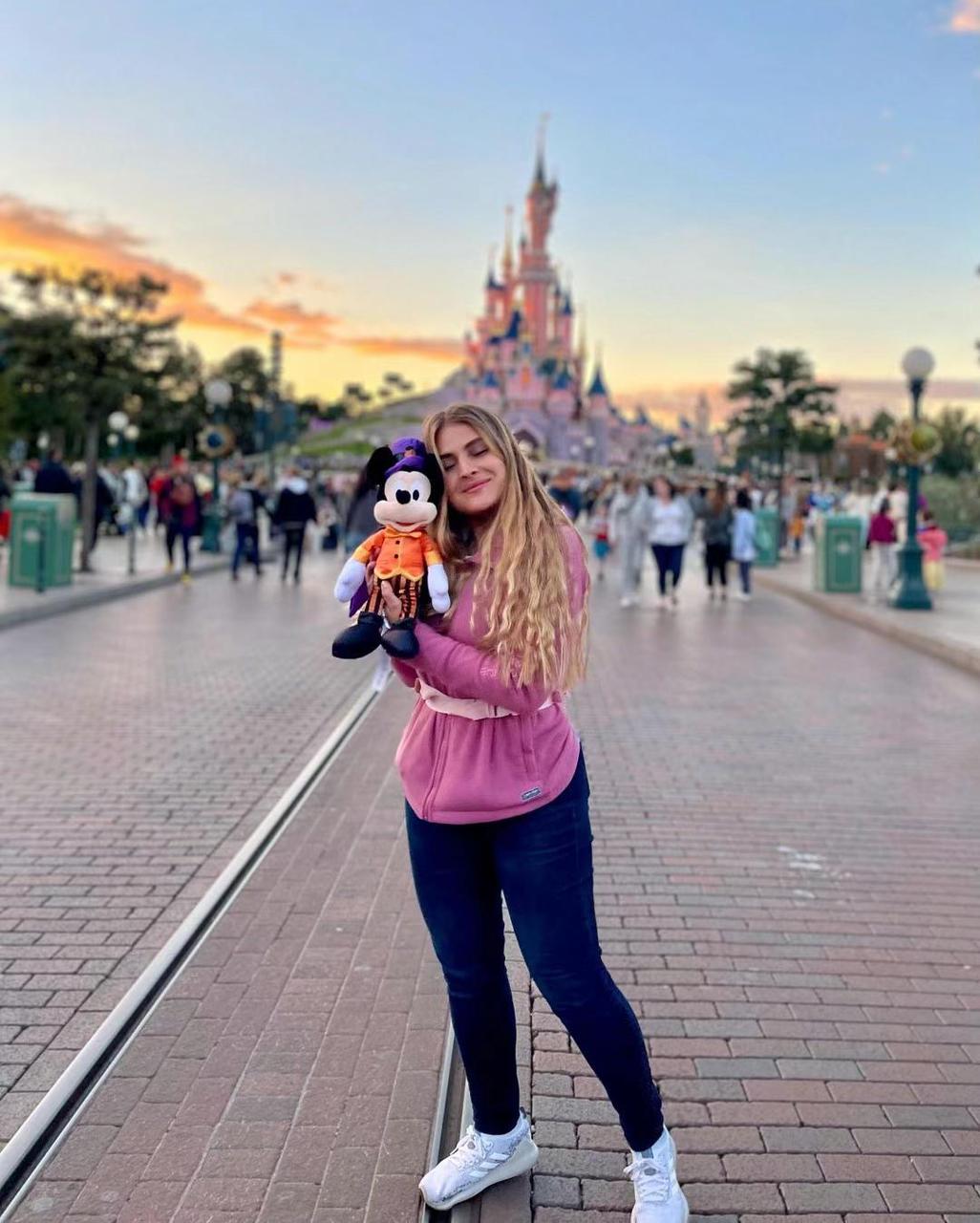In the realm of modern dating and relationships, the phenomenon of ghosting has emerged as a perplexing and emotionally challenging experience for many individuals.
Ghosting refers to the act of abruptly cutting off all communication and contact with someone, leaving the other person bewildered and often heartbroken.
While the term “ghosting” itself is not new, the gradual ghosting approach is an even more subtle and perplexing variant, often leaving the recipient of such behavior in a state of confusion and uncertainty.

Signs He Is Slowly Ghosting You
It is essential to remember that slow ghosting is not a reflection of your self-worth or desirability. Relationships are complex, and sometimes, circumstances change, leading individuals to reevaluate their connections with others.
While confronting the possibility of being slowly ghosted can be disheartening, it can also present an opportunity for self-reflection and growth.
Recognizing the signs early on empowers you to have open and honest conversations about your feelings, expectations, and needs, fostering healthier communication in all aspects of your life.
By shedding light on these signs, we aim to help you navigate the emotional turmoil and equip you with insights to make informed decisions about your well-being.
Understanding Ghosting And Slow Ghosting
A. Definition Of Ghosting In Dating And Relationships
Ghosting refers to the act of abruptly cutting off all communication with someone without any explanation, leaving the recipient feeling confused, hurt, and abandoned.
It is a heart-wrenching experience where the person who was once actively involved in your life suddenly disappears, like a ghost vanishing into thin air.
Ghosting often occurs after a period of intense interaction, which can make the rejection even more bewildering and emotionally distressing.
The absence of closure and unanswered questions can lead the person being ghosted to replay every conversation, trying to decipher what went wrong and why the other person decided to vanish.
B. Differentiating Slow Ghosting From Traditional Ghosting
While traditional ghosting is a swift and decisive disappearance, slow ghosting is a more insidious and gradual process. It involves a steady withdrawal of attention, affection, and communication from the other person over an extended period.
Unlike the suddenness of traditional ghosting, slow ghosting leaves the recipient on an emotional rollercoaster, as they oscillate between moments of hope and despair.
In slow ghosting, the signs are often subtle and can be easily overlooked, as the person may still be physically present and engage in occasional communication.
However, the quality and quantity of interactions diminish progressively, creating a growing sense of distance and disconnection.
The gradual nature of slow ghosting can intensify the emotional impact, as the recipient is left wondering whether the decline in interest is merely a temporary phase or an indication of impending ghosting.
C. Psychological Impact On The Recipient
The psychological impact of ghosting, be it slow or traditional, can be profound and long-lasting. When someone you deeply care about begins to fade away, it can trigger a range of emotions, such as anxiety, sadness, and self-doubt.
The uncertainty and lack of closure can lead to feelings of rejection and abandonment, damaging one’s self-esteem and confidence.
In the case of slow ghosting, the gradual nature of the process can add an extra layer of emotional turmoil. The recipient might experience a constant state of unease, constantly questioning their worth and desirability.
The intermittent moments of attention and affection from the slowly ghosting person can create false hopes and further confuse the recipient’s emotions.
Early Indicators Of Slow Ghosting
A. Decreased Communication Frequency
1. Delayed Responses To Messages
In the initial stages of a relationship, messages are often exchanged promptly, and conversations flow effortlessly. However, one of the early signs of slow ghosting is the increasing time gaps between responses.
If you notice that your partner takes longer to reply to your messages, it may be an indication of waning enthusiasm or a shift in priorities.

2. Less Initiation Of Conversations
Another red flag is when your partner begins to initiate fewer conversations. In the beginning, both parties are eager to connect and engage with each other.
But if you find yourself being the one to initiate conversations most of the time, it may signal a decline in their interest or investment in the relationship.
B. Changes In Communication Tone
1. Shifting From Warm And Affectionate To Distant And Aloof
Early on, partners often communicate with warmth and affection, using terms of endearment and expressions of care. However, as slow ghosting takes hold, you may notice a significant change in their communication tone.
The once affectionate messages may become more distant and detached, lacking the emotional depth that was present before.
2. Short And Uninterested Replies
Communication becomes a key indicator of the state of a relationship. If your partner’s responses become consistently short, lacking in enthusiasm, and devoid of meaningful engagement, it could be a sign that they are slowly disconnecting from the relationship.
C. Cancelling Plans And Avoiding Commitments
1. Frequent Cancellations Or Rescheduling
As slow ghosting progresses, you might notice a pattern of your partner canceling plans or frequently rescheduling them.
Initially, they may have eagerly made time for you and prioritized spending time together, but now they seem more inclined to avoid commitments and may come up with excuses to back out of previously agreed-upon plans.
2. Avoidance Of Future Plans
If your partner seems evasive or unenthusiastic about making plans, it could be a clear sign of slow ghosting. Planning for the future together is a natural progression in a healthy relationship.
When your partner avoids discussing or making commitments for the future, it may indicate their desire to distance themselves emotionally.
Emotional Detachment And Disinterest
A. Lack Of Engagement In Meaningful Conversations
1. Superficial And Generic Responses
One of the early signs of emotional detachment is a lack of engagement in meaningful conversations. If your partner’s responses become superficial and generic, lacking in depth and thoughtfulness, it may indicate a decreasing emotional investment in the relationship.
Instead of actively participating in discussions, they might offer short and uninvolved replies, leaving the conversation feeling shallow and unfulfilling.

2. Avoidance Of Personal Topics
Emotional detachment often involves a reluctance to discuss personal topics or share intimate details. If your partner starts to avoid discussing their feelings, thoughts, or experiences, it could be a signal of growing emotional distance.
They may choose to keep their emotional world private, leaving you feeling excluded and disconnected from their inner life.
B. Reduced Emotional Support And Validation
1. Minimal Empathy And Understanding
Emotional support and empathy are vital aspects of a thriving relationship. When your partner becomes emotionally detached, you might notice a decline in their ability to empathize and understand your feelings.
They may seem indifferent or dismissive towards your emotions, leaving you feeling unheard and invalidated.
2. Failure To Acknowledge Feelings Or Concerns
In a healthy relationship, partners should be willing to acknowledge and address each other’s feelings and concerns. However, in the case of emotional detachment, your partner might ignore or downplay your emotions, making you feel like your feelings are insignificant to them.
Social Media And Online Presence
A. Decline In Online Interactions
1. Decreased Likes, Comments, And Reactions
Social media platforms are built around engagement, and when someone is interested in you, they typically show it through likes, comments, and reactions to your posts.
However, as slow ghosting takes hold, you may notice a significant decline in these interactions with your partner. Their once-active participation in your posts might dwindle, signaling a potential shift in their interest and investment in your virtual presence.
2. No Longer Tagging Or Mentioning You In Posts
Another telling sign is when your partner stops tagging or mentioning you in their posts. In the initial stages of a relationship, it’s common for couples to share their experiences online, expressing affection and creating a sense of togetherness.
If your partner suddenly stops including you in their posts, it could be an indication of their emotional detachment and desire to create distance.
B. Unwillingness To Share Details Of Personal Life
1. Posting About Activities Without Including You
When a partner is slowly ghosting, they might start posting about their activities and experiences without including you.
They may share moments from their life, but you notice that they seem to be excluding you from these posts, leaving you feeling disconnected and sidelined in their virtual world.
2. Excluding You From Virtual Gatherings
Virtual gatherings have become increasingly common, especially in long-distance or busy relationships. However, if your partner begins to participate in virtual events or gatherings without inviting or involving you, it might be a sign of emotional detachment.
Exclusion from these online gatherings can leave you feeling left out and questioning the state of your relationship.
Avoidance Of In-Person Meetings
A. Postponing Face-To-Face Meetings
One of the early signs of slow ghosting is the postponement of face-to-face meetings. In the initial stages of a relationship, both partners are usually eager to see each other and make plans to spend time together.
However, if your partner starts to consistently postpone or delay meeting up, it may be a sign of their declining interest or commitment to the relationship.
They might offer vague excuses or claim to be busy more frequently, leaving you feeling disappointed and questioning the significance of the connection.
B. Finding Excuses To Avoid Spending Time Together
As slow ghosting progresses, you might notice your partner finding more excuses to avoid spending time together. They may seem unenthusiastic about making plans or might agree to meet up but then cancel at the last minute.
It’s essential to pay attention to the patterns of avoidance and assess whether these behaviors are becoming more frequent and consistent. Consistently avoiding in-person meetings can indicate that your partner is gradually disengaging from the relationship.

C. Showing Disinterest In Physical Intimacy
Physical intimacy is an essential aspect of romantic relationships, and its absence can be indicative of emotional detachment.
If your partner starts to show disinterest in physical intimacy, such as avoiding affectionate gestures, hugs, or kisses, it may be a sign of their declining emotional connection.
They might appear distant or withdrawn during intimate moments, leaving you feeling rejected and unimportant.
Lack Of Future Plans Or Commitment
A. Avoiding Discussions About The Future
One of the early signs of slow ghosting is the avoidance of discussions about the future. When a partner becomes emotionally detached, they might shy away from conversations about long-term plans, goals, or even simple future activities.
They may appear nonchalant or disinterested when you try to broach these topics, leaving you feeling uncertain and unheard.
Their unwillingness to engage in discussions about the future may indicate that they are avoiding making any significant commitments to the relationship.
B. Making Future Plans Without Involving You
As slow ghosting progresses, you might notice your partner making future plans without including you in them. They may talk about upcoming events, trips, or activities but show no enthusiasm or intention of inviting you to be part of them.
It’s essential to pay attention to these exclusions and assess whether they are becoming more frequent and consistent. Consistently being left out of future plans can be hurtful and may indicate that your partner sees their future without you.
C. Hesitancy To Define The Relationship Or Make It Official
Defining the relationship and making it official are significant milestones in any romantic connection. However, when a partner is slowly ghosting, they may hesitate to take these steps.
They might avoid discussing labels or committing to a more serious level of the relationship. This hesitancy can leave you feeling insecure and uncertain about where you stand in their life.
It may indicate that they are reluctant to fully invest in the relationship or take it to the next level.
Mixed Signals And Confusing Behavior
A. Sending Conflicting Messages
1. Fluctuating Between Hot And Cold Behavior
One of the most common signs of slow ghosting is fluctuating between hot and cold behavior. In one moment, your partner might seem affectionate, attentive, and engaged, making you believe that everything is fine.
Yet, in the next moment, they might become distant, aloof, or unresponsive, leaving you feeling confused and unsure about their true feelings.
These mixed signals can create emotional turbulence and make it challenging to understand where you stand in the relationship.
2. Providing Ambiguous Responses To Your Questions
Another aspect of confusing behavior is when your partner responds ambiguously to your questions or concerns.
They may avoid giving direct answers or evade addressing important issues in the relationship. This ambiguity can leave you feeling unsatisfied and unable to gauge their true intentions, leading to further confusion and frustration.
B. Using Excuses To Justify Distancing
1. “Busy At Work” Or “Dealing With Personal Issues”
When someone is slowly ghosting, they may resort to using common excuses to justify their distancing behavior.
They might claim to be busy with work or dealing with personal issues as a way to explain their reduced communication and availability.
While these reasons may be genuine to some extent, consistent use of such excuses without actively making an effort to maintain the relationship can be a sign of emotional detachment.

2. Blaming External Circumstances For Detachment
Similarly, a partner who is slowly ghosting may blame external circumstances for their detachment and emotional distance. They might point to stress, family issues, or other life challenges as reasons for their changing behavior.
While external factors can impact a person’s emotional state, using them as an excuse to avoid addressing the relationship’s issues can be indicative of their disinterest.
Seeking Closure And Communicating Your Feelings
A. Assessing The Situation And Patterns Of Behavior
Before seeking closure, take the time to assess the situation and recognize the patterns of behavior that have led you to suspect slow ghosting. Reflect on the changes in your partner’s communication, behavior, and emotional availability.
Are they consistently showing signs of emotional detachment? Have there been repeated cancellations or avoidance of spending time together?
Understanding these patterns can help you gather your thoughts and emotions, preparing you for the conversation ahead.
B. Initiating An Open And Honest Conversation
1. Expressing Your Concerns And Emotions
When you feel ready, initiate an open and honest conversation with your partner. Find a comfortable and private space where you can talk without distractions.
Share your concerns and emotions calmly, expressing how their recent behavior has impacted you and left you feeling uncertain about the relationship.
Be vulnerable and authentic, allowing yourself to express your feelings without holding back.
2. Asking For Clarity About The Relationship
In the conversation, ask your partner for clarity about the state of the relationship. Be direct in your questions and ask if they are still interested in continuing the relationship or if they feel that things have changed between you.
Remember that seeking clarity is essential for your emotional well-being, even if the answers are difficult to hear.
C. Preparing For Different Outcomes
1. Accepting The Possibility Of A Breakup
While seeking closure and communicating your feelings is vital, it’s essential to prepare yourself for different outcomes, including the possibility of a breakup.
Slow ghosting might be an indication that your partner is not as invested in the relationship as you are.
If the conversation leads to a decision to end the relationship, try to approach it with grace and understanding, knowing that it is a necessary step for both of you to find happiness and fulfillment.
2. Setting Boundaries For Your Emotional Well-Being
Regardless of the outcome, setting boundaries for your emotional well-being is crucial.
If your partner acknowledges their emotional detachment and is willing to work on the relationship, establish clear boundaries about communication, expectations, and the effort required from both parties.
On the other hand, if the decision is to part ways, establish boundaries for no contact or limited contact to allow yourself time to heal and move forward.
Coping And Moving On
A. Accepting The Reality Of The Situation
Acceptance is the first step in coping with slow ghosting. Acknowledge that the signs of emotional detachment and disinterest are real and that your partner’s behavior is not a reflection of your worth.
It’s natural to feel hurt and disappointed, but understanding that slow ghosting is about your partner’s emotional state and not your value as a person can help you gain perspective.
B. Focusing On Self-Care And Personal Growth
Engaging in self-care activities is crucial during this time. Take care of your physical and emotional well-being by engaging in activities that bring you joy and comfort.
This might include exercising, practicing mindfulness, journaling, or pursuing hobbies that you love. Use this period of emotional transition to focus on personal growth and self-discovery. Invest in activities that help you learn more about yourself and build resilience.
C. Surrounding Yourself With Support And Positivity
Lean on your support network of friends and family during this time. Sharing your feelings and experiences with loved ones can provide comfort and understanding. Surround yourself with positive influences who uplift and encourage you.
Avoid spending too much time dwelling on the negative aspects of the situation, and instead, seek out activities and people that inspire and motivate you.
D. Exploring New Interests And Social Opportunities
As you heal from slow ghosting, consider exploring new interests and social opportunities. Engaging in new activities can be invigorating and help you build new connections. Join clubs, attend workshops, or participate in community events that interest you.
Expanding your social circle can lead to meaningful friendships and potential romantic connections in the future.
Conclusion
In conclusion, recognizing the signs of slow ghosting is a crucial step in navigating the complexities of modern relationships.
Slow ghosting is characterized by a gradual withdrawal of emotional connection and engagement, leaving the recipient feeling disconnected and uncertain about the state of the relationship.
The early indicators of slow ghosting, such as decreased communication frequency, changes in communication tone, and avoidance of commitments, serve as red flags that warrant attention and open communication.

Hi, I’m Jasmine Sophie and welcome to my website!
As a marriage counsellor, I’m passionate about helping people figure out solutions to their relationship issues. While based in Austin and with most of my clients coming from the local area, I believed that there were more people out there who could benefit from my services.
That’s why I decided to set up this webiste; so that I can help even more people break through any difficulties they may be facing in their relationships. In my free time, I enjoy activities like golfing and fishing, as well as just spending time with family. It’s just another way for me to explore my creativity and use it towards helping others.
Experience:
With a wealth of experience in the realm of love and relationships, Jasmine has been transforming lives for over a decade. Her remarkable journey as a licensed psychologist and marriage and couples therapist has allowed her to witness the transformative power of love firsthand. Through her extensive work with diverse couples, she has unraveled the secrets to fostering healthy and thriving partnerships.
Expertise:
Jasmine’s expertise lies in untangling the complex web of relationship dynamics. Whether it’s reigniting the spark in long-term marriages, healing wounds from past relationships, or guiding individuals in their pursuit of true love, Jasmine possesses an unwavering commitment to helping people create fulfilling and joyful connections. Her profound insights and practical strategies have earned her accolades as a trusted authority in the love and relationship sphere.
Education:
Jasmine Sophie’s academic achievements serve as a solid foundation for her exceptional knowledge in the field. She holds a master’s degree in Psychology, specializing in marriage and family therapy. Combining her academic prowess with her empathetic nature, Jasmine seamlessly integrates evidence-based techniques and profound wisdom to empower her readers to navigate the complexities of modern relationships with grace and authenticity.
Join Jasmine Sophie on joypassiondesire.com, and embark on a transformative journey to embrace love, ignite passion, and cultivate relationships that transcend ordinary boundaries. Through her illuminating articles and expert guidance, she will empower you to create a love story that is worthy of celebration and admiration. Get ready to embark on an extraordinary adventure of love and self-discovery with Jasmine Sophie as your trusted guide.